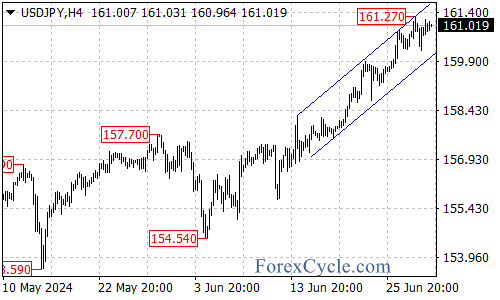The USD/JPY pair closed slightly higher at 160.81 in late trading, after touching a 38-year high of 161.27 earlier in the session. This movement comes on the heels of several key economic indicators released last week.

Inflation Slowing, But Only Slightly
Friday’s data showed that the Federal Reserve’s preferred inflation gauge, the Personal Consumption Expenditures (PCE) price index, remained flat month-over-month in May. The year-over-year increase was 2.6%, down slightly from April’s 2.7%. This report largely met expectations, confirming the slowing inflation trend seen in earlier Consumer Price Index (CPI) and Producer Price Index (PPI) data. However, the impact on the dollar was limited due to the modest nature of the slowdown.
Positive Economic Indicators
Other reports painted a more optimistic picture of the U.S. economy:
- The Chicago Purchasing Managers’ Index (PMI) jumped from 35 in May to 47.4, surpassing economists’ expectations of 40.
- The University of Michigan’s Consumer Sentiment Index for June came in at 68.2, better than anticipated.
These positive indicators provided support for the dollar in late New York trading.
Focus Shifts to Employment Data
Investors are now turning their attention to next week’s U.S. non-farm payrolls report. Wall Street economists predict an increase of 195,000 jobs in June, down from 272,000 in May. Some prominent analysts believe that unless the job market begins to deteriorate, the Federal Reserve will maintain its current stance.
Yen Intervention Concerns
While the dollar continues to climb against the yen, traders remain cautious about potential intervention from Japanese authorities. However, with no signs of Fed rate cuts on the horizon, the carry trade dynamic is likely to persist, pushing the dollar higher.
The 160 level, once a key psychological barrier, has now been breached without intervention from Japanese authorities. As a result, traders are expected to continue testing higher levels, albeit cautiously.
In summary, the combination of slowing but persistent inflation, positive economic indicators, and the Fed’s steady stance is driving the dollar to multi-decade highs against the yen. However, the threat of Japanese intervention looms large, keeping traders on their toes as they navigate these uncharted waters.

